I was seven when the war started and eleven when it ended and these are my memories of World War II.
"Remember Pearl Harbor"
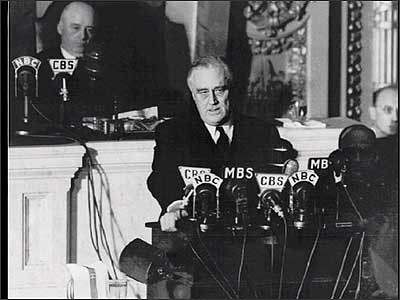
My first memory of World War II was on Dec. 7, 1941. The news about Japan bombing Pearl Harbor came over the radio and our family had heard it and talked about it that night. The next day I was late walking the two blocks to school. All the children were already in their classrooms. As I was hurrying up the semi-circle sidewalk toward the front door of the school, I heard the radio in the eighth grade classroom. This was very unusual since radios or films were not a normal part of the classroom in those days. I recognized the distinctive voice of President Roosevelt. I walked over closer and stood under the window of the eighth grade classroom and listened as President Roosevelt declared war. I somehow knew that this was an historic moment and so, even though I was late, I stayed to listen.
Shortly thereafter, slogans on pins and posters popped up everywhere, saying, " Remember Pearl Harbor." I do remember it more than seventy years later.
War Stamps and War Bonds
The next war related memory I have is that, Miss Flake, our third grade teacher, gave everyone in class a little stamp book. The government needed money for the war and were selling bonds to the public. Even little children could help by buying stamps for 10 cents each. It took 75 stamps to fill a book. Miss Flake gave little prizes at certain designated levels. It seems like I got a coloring book, when I finally got the entire book filled with stamps.
The book was turned in for a $10 War Bond, which I remember as being very fancy and official looking compared to the wrinkly messy stamp book I had been carrying around all year. You couldn't cash the bond for a whole ten years, but you felt really good about "helping win the war."
Winning the War, One Gum Wrapper at a Time
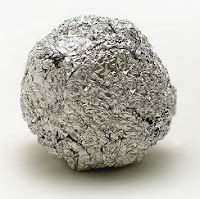

Another way a child could help win the war was to save the foil wrapped around a stick of gum or candy bar. You had to carefully peel off the foil from the underlying paper and then you wrapped it around the ball of foil in the classroom. In fourth grade we had a classroom ball of tin foil. I think there might have been a contest to see which classroom could get the most tin foil because I remember kids bragging on the playground about how big our classroom ball had grown.
The Mysterious, Yet Familiar, Handwriting on the Envelope
One day my father came home from the post office with a letter for me. I think this might be the first letter I had every received, addressed personally to me. I looked at the envelope to see who it is from. It didn't have a return address on it but the hand writing looks familiar. I thought I had seen it somewhere before. I remember thinking that it might be from my Aunt Natalia. She often wrote to my mother and we considered her sort of a substitute grandmother since we didn't have any grandparents. I tore open the envelope and out fell the contest rules and entry form for a scrap paper contest that the Arizona Republic was sponsoring to help the war effort. I had sent a self addressed envelope to the newspaper perhaps a week or so, before, and had forgotten all about it. The familiar writing on the envelope was my very own. I can still see the careful way I had written Rayna Gay Pace on the envelope in my very best Palmer cursive handwriting.
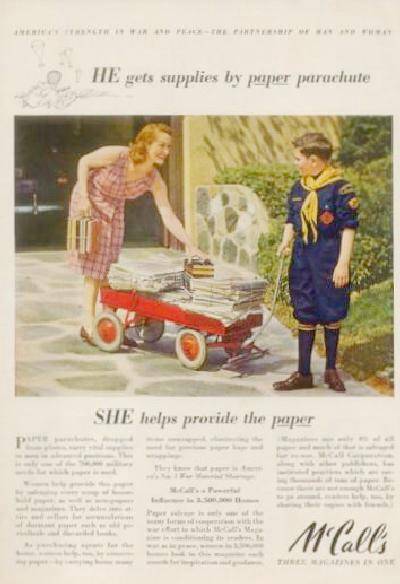 |
| This advertisement suggests that the scrap paper could be used for paper parachutes. Other places say they packed parts for machines in the paper. |
The contest rules stated that the total weight of the papers and books collected would determine the winner. I set to work collecting all the newspapers I could. In Snowflake there was a ZCMI or maybe it was an SCMI store that had become defunct by the time we moved there. One day they were tearing it down and throwing out some very heavy account books from the store. My father brought them home for my paper drive, because they were so heavy. (They would be very valuable today as historic relics but they went to a scrap paper drive for the war.) Of course I didn't win the contest. Even if I had collected all the available paper in the entire town of Snowflake, maybe even the whole Navajo county, it wouldn't have been enough to win the contest. A boy in Phoenix, who also delivered newspapers, won. With the use of fliers and his father's help and a pick-up truck, they had collected thousands of pounds of paper from a wide area with hundreds of homes. Did I mention that the prize was a horse?




Although scrap iron, aluminum, rubber, and even rags were collected, I have no personal memory of these being collected at school or in our town.
Milk Weeds and the War
Japan had control of Indonesia which supplied most of the kapok for life jackets and life preservers. The U.S had to substitute milkweed "floss" for the kapok. Some schools collected bags of the fluffy seeds. One of my teachers must have talked about it to our class. When I delivered newspapers, I saw milk weeds growing on a lot of vacant lots and along the side the dirt roads in Snowflake. I remember looking at all the fluffy seeds and thinking that I should gather them up for the war effort. It never happened, but whenever I see milk weeds, I still remember that they could save lives.
Tin Can Tap Dancing

In addition to those pre-school tap dancing lessons I had taken in Safford, my mother found me another teacher in Snowflake. She lived in a tiny apartment above a free-standing one-car garage. I remember dancing in her tiny living room. Having poor rhythm ability and no real talent in music, this didn't last very long.
I was never destined for a dance career, but because of the war effort to collect scrap tin cans, I got my one big chance in the spotlight.. During some school patriotic program, another girl and I had a tap dancing duet. We tapped onto the stage to a song about saving tin cans for the war effort. We carried in our hands a tin can with both ends cut out. After a little bit of tap dancing, the song ended with something like, "Stomp on that tin can," or "Mash it Flat." We lay the cans on their sides and stomped them flat. That was the end of my tap dance career although my brain and feet still know all the steps to "School Days, Good Old Golden Rule Day." I just stood up from the computer and did it to see if I could. And I could!
Pennies Change Color
I do remember when pennies changed color. Because of the shortage of copper, the government began to make zinc coated steel pennies instead of copper ones. They might be described as silver in color, but it was not a pretty silver like a dime. They were a flat dirty gray color. Of course, the copper ones were still available and I even remember that once in a while you would even come across an Indian head penny, still in circulation. I wish I had known to keep some of them. However, my father realized that these zinc pennies would be collectors items and glued one into a scrapbook along with some rations cards. ( In that same scrapbook, he had some heavy cardboard "coins" produced by the State of Arizona in the 1930's for sales tax purposes. There was half cent piece and even a one tenth cent piece. Imagine, making change for a penny and now they are thinking to do away with the penny, altogether.
Stars Change Colors
 |
| One out of three sons died in this family. |
If a member of your house was in one of the armed services, the government issued you a blue star to put in your window. If the that person died in the service, then you got a gold star. Since I delivered the newspaper and went past every house in town, everyday, except Sunday, I would be one of the first persons to notice if a blue star turned gold. I do, in fact, remember when one family's blue star came down and they put up a gold one.
Gum Goes Away


My mother would always dole out a half stick of gum to each kid, but soon it became almost impossible to get any kind of gum.. Wrigley's ceased making gum altogether because they were unable to import the ingredients.
An artificial gum called Orbit came out and, of course, with no tin foil in the wrapper. It was not very tasty and it didn't chew that great either. In the last few years this name has been brought back as a new brand of gum.
After the war, gum began to be manufactured again, but it was in short supply. I can remember a new grocery store opening, and to lure customers they offered two free pieces of bubble gum. They were swamped with customers. Everyone wanted a piece of bubble gum.
A girl in my seventh grade class at Kenilworth School brought to school a whole box of bubble gum. Her father worked for a candy distributor and he had gotten her a box of 144 pieces of gum meant to sell for a penny. She sold them to my classmates and kids in all the upper grades for one dollar each. There were plenty of buyers. That was quite a profit, $144 for what cost about $1 wholesale. Another financial lesson learned. Supply and demand dictate the price of even something as everyday as chewing gum.
My Chinese Connection

One day when I was delivering newspapers to a certain house, their son, who was in the military, was home on furlough. He had brought home some Chinese coins and he gave me one. It was copper with a square hole in the middle and had Chinese characters on it. I was told that Chinese kept their money on a cord strung through this hole. I kept this coin up until my children were in school. I let one of them take it for show -and-tell along with some other coins and a piece of Indian wampum. The Chinese coin never made it home. When I was teaching in China I bought another one like it at a market.
Three Stories about U. S Enemies
(as seen by children)
One day a total stranger stopped in Snowflake. I don't know any of the details of the adult interaction, but all the kids at school were talking about him. The general conclusion was that he was a German spy.
Our family subscribed to the Children's Playmate Magazine and they had a contest to finish a drawing of a basic human figure to represent a person from a foreign country in their native dress. I had a new set of colored pencils and thought, that I could win this contest. My idea was to finish the figure as Hitler and put a noose around his neck going up to a wooden scaffold. I drew a Nazi uniform, probably researched from our stash of Life magazines. I got Hitler's hair and mustache, just right. I can still remember coloring the rope yellow. With the money I made from the paper route, I could easily afford the three cent stamp and so I submitted it with great hopes. Obviously, I didn't win.
My younger brother, Wendell, had a worn-out pair of boots that were too small for him. My father told him to throw them in the big stove that heated our living room. Wendell did not want to part with his boots. So, I got the great idea to name one boot, Tojo, and the other one Hitler. Only then, at age 3, did he agree to throw them into the fire. I opened the door of the stove and he threw the little boots into the roaring fire.
The Well Traveled Divinity
A Very Sad Story
Our Aunt Natalia had two sons, Gilbert, who joined the Air Corps, and Malcolm, who joined the Army. Gilbert flew planes in Burma and China and Malcolm was in an armored division on the ground in Europe. Aunt Natalia gave Gilbert's trumpet to my brother, Milton, and she gave me Malcolm's saxophone, which I played in band all the way from elementary school through college. Since both of her sons were gone, Aunt Natalia lived alone. On the weekends, she would sometimes drive from St. Johns over to Snowflake where three of her sisters lived.
One weekend when she came over, my mother suggested that we make a batch of divinity candy to send to Malcolm. Divinity is a light fluffy confection that requires a lot of beating, but my mother had an electric mixer that made the job easier. We kids cracked black walnuts and dug out the nut meats, while my mother and Aunt Natalia made the divinity. After the candy cooled, we packed it into a tin can with a tight lid. Aunt Natalia labeled it with Malcolm's APO address and my mother said she would mail it on Monday. We got a letter from Aunt Natalia the next week saying how worried she was about Malcolm. That night she had heard on the radio that the 12th Armored Division was meeting stiff resistance. That was the first time she had heard his specific division mentioned on the radio. Shortly after that she got a telegram telling her that Malcolm had been killed in the very battle that had been mentioned on the radio. Some time later, we went to his funeral in St. Johns and there was a military contingent there to do honors with taps and gun salute and the folded flag. It was very sad. When my youngest brother was born, my parents named him, Malcolm, to honor this cousin, that we knew so well.
Some time later, to our surprise we got the can of divinity back marked, "undeliverable." It had traveled to Europe by ship and probably all the way to the front lines and had been returned by ship, I assume, because of the long delay. My mother didn't want to open it. I remember that we took it outside and tried to eat some of it. The nuts were totally rancid, but the divinity surrounding the nuts was still good.
Other Family Members Who Went to War
Besides Malcolm Greer and his brother, Gilbert Greer, we had many relatives who were also in the war. My brother, Arman, is named for Col Arman Peterson, my mother's cousin. His father, Uncle Andrew, was my grandmother Isaacson's brother and he was a history professor at Northern Arizona State College, in Flagstaff.
My father's youngest brother, Lincoln, served in the Navy on a submarine. We had a picture of him in his uniform. My father's sister, Beth and her oldest daughter served in some service because we had pictures of them in their uniforms, as well.
My father's oldest brother, Wilson's oldest son was an instructor training pilots to fly. He died in a mid-air collision in 1944.. My father knew a Navajo woman who wove rugs and he got her to weave a small Navajo rug with a gold star to honor his death. A book about Levi Wilson Pace, Jr. has just recently been published.
We knew Melvin Denham, my cousin, really well, since he lived very near us in Snowflake and we spent time with their family. He went into the Army during World War II and was sent to fight in Europe. In one battle he was wounded in the neck and was bleeding badly from his jugular vein (I think) and a medic came by and inserted a bladder from his fountain pen into his vein and saved his life.
Aunt Ella who also lived in Snowflake, had three sons in the service, Harold, Lyle, and Herman. Harold was stationed in Walla Walla, Washington. As children, we thought that name was very funny and like to say it over and over, "Walla Walla, Washington." I remember just one story from the war about these boys. Harold was older than the usual recruit and even had false teeth. When he was being sent overseas, he became sea sick and vomited over the side of the ship, losing his false teeth in the process. All three of Aunt Ella's sons returned home from war, alive.
My mother was one of ten children and there were eight cousins that served in World War II, but I didn't know them very well. There were several other cousins on my father's side that also served. As near as I can remember, there were no other deaths.
The War Ends
Everyone knew that the war was ending by the fall of 1945, when my parents moved to Phoenix. I don't remember any big celebration at home or in our neighborhood when the war ended. I do remember the famous picture of the kissing nurse and sailor in Life magazine. I knew that President Roosevelt had died before the end of the war and that Truman had become president. Everyone knew the name of General MacArthur and General Eisenhower. But we no longer went to movies on a regular basis, so we didn't see the newsreels. Nor, was I delivering newspapers on a daily basis and seeing all the headlines. All the war stuff took a back seat to adjusting to a new school, living in a city rather than on a farm or a ranch, and becoming a teenager.

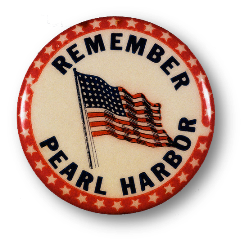
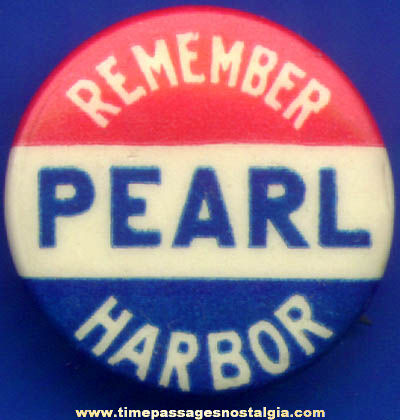
















No comments:
Post a Comment